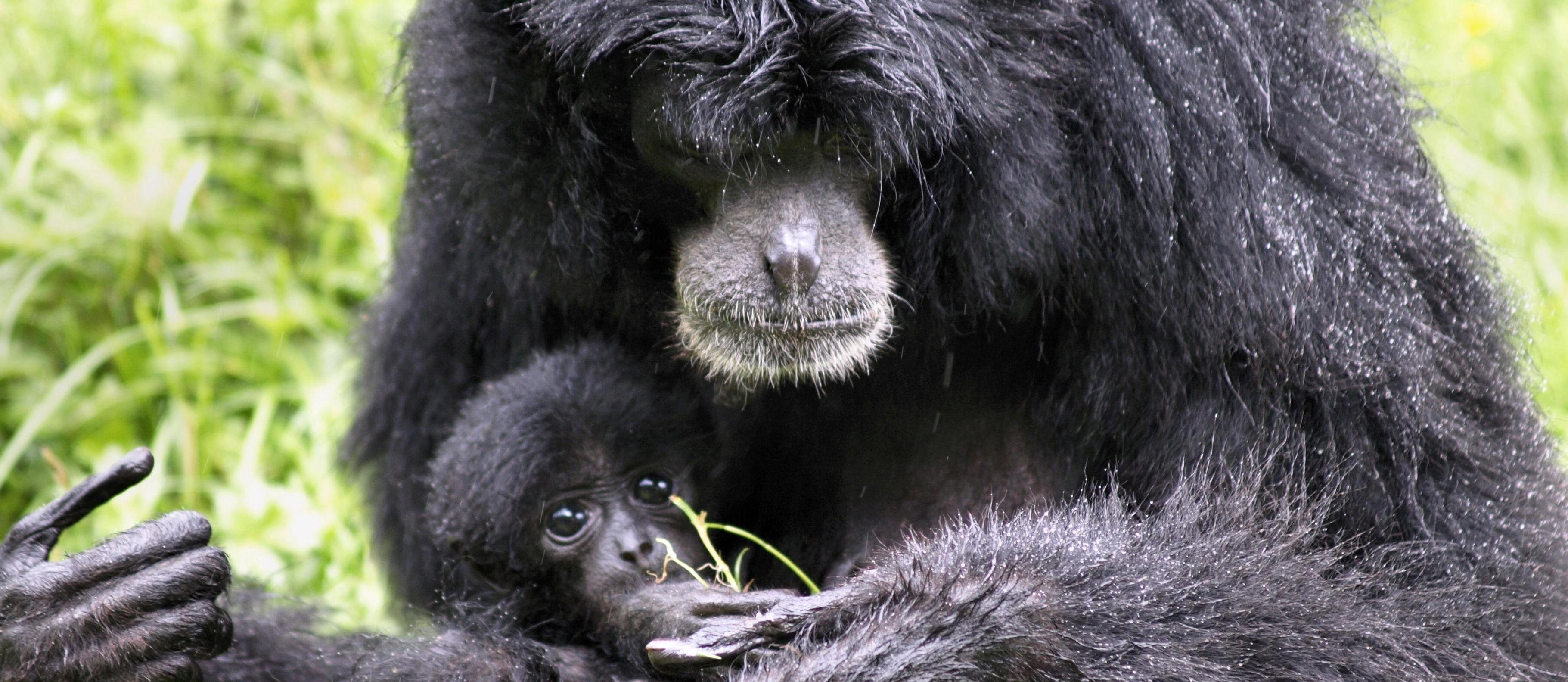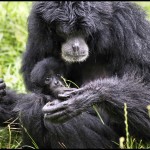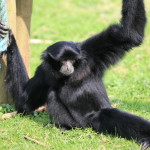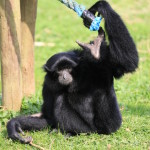Siamang
Symphalangus syndactylus
Habitat: Primary and secondary lowland rainforest, they are found at much lower densities in secondary forest. All levels of the canopy are used, although emergent trees are required for resting and sleeping.
Threats: This species is threatened by forest conversion and collection for the pet trade. Between 1995 and 2000, almost 40% of the habitat on Sumatra was damaged or destroyed by logging, road development and conversion to agriculture or plantations. Oil Palm and Coffee plantations present an increasing threat. Oil palm plantations are spreading across Indonesia to the detriment of its rainforests and the siamangs that live there.
With about half of our everyday products (e.g. food, soap, cosmetics) containing palm oil, it’s nearly impossible to cut it out of our lives entirely. There is also no easy way to know whether a certain product contains sustainably harvested palm oil just yet. We can, however, voice our concerns and support companies that pledge to use sustainable palm oil in their products, including Procter & Gamble and Nestlé, which have committed to purchasing 100% sustainable palm oil by 2015. The next time you go shopping, use your purchasing power to help protect siamangs.
Social Behaviout: They live in a tight social group, monogamous 1 male-1 female with offspring in a family group.
Food: Their diet consists of 59% fruit, 31% leaves, 8% flowers and 3% animal prey. Fig seeds are dispersed.
Information: This is the largest of the Gibbons; it is an ape not a monkey. Both male and female Siamangs are black and large, with stocky build relative to other gibbons. Adults have a dark grey throat sac. They get around the high canopy of the forest by brachiation; this is swinging hand over hand. The Siamang is daytime active (diurnal) and arboreal. They usually live alongside the smaller White handed and Dark handed Gibbons. Siamangs inflate their throat sac to make their great call. The male screams his part of the call while the female produces a series of barks. They are one of the noisiest animals in the forest.
Breeding: They can live for up to 35 years, the gestation period is up to 239 days and birth interval 4 years.
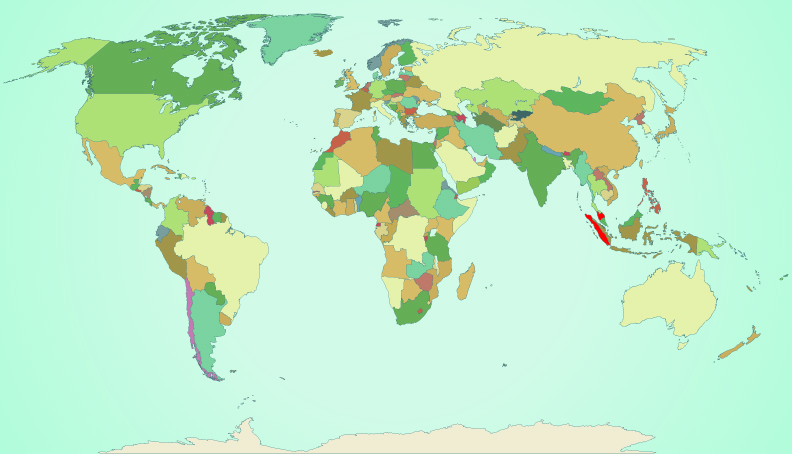
They live in Sumatra and in a pocket in the centre of the Malay Peninsula.
Map: Red = Locations Found 829

